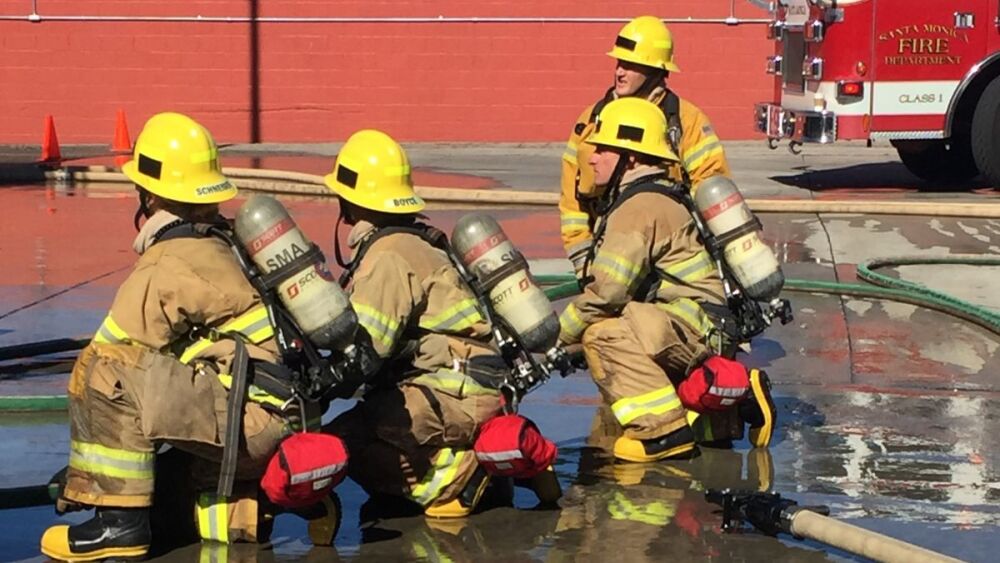Editor’s Note: How do you, as a fire service leader, underscore the importance of fire service recruitment among your crews?
In announcing a recruitment effort for a major urban fire department, the city’s director of human resources stated that the problem is that women and minorities have not been interested in applying for jobs as firefighters.
This director will not be the first to learn that effective recruitment requires a focused and sustained commitment.
Many fire departments approach recruitment in an episodic way: There’s a hiring process coming up, so they go into recruitment mode. Posters are printed, events scheduled and social media geared up to talk about what it takes to become a firefighter.
All of this is fine, but it is not enough.
For recruitment to be truly effective, it must be something that happens all the time. It must become part of the identity and job description for every member of the department. If this is not the case, then recruitment will be undermined, regardless of how much effort is put into a particular program.
Recruitment through the years
Recruitment must start when potential candidates are young, especially for those who may be from groups not traditionally well represented in the fire service. Elementary school is not too early to get the message out about what it means to be a firefighter and how any individual might find challenge and fulfillment in this role. Every time a fire crew goes to a school to do a safety program or show the kids the truck, they are recruiting potential members, 15 or 20 years down the line.
Young people of high school age who already have some idea what being a firefighter entails can be brought into focused programs like Explorer posts, volunteer groups, or internships that focus on public service through emergency response. Summer fire camps are another effective tool for this age group. Teenagers are making decisions about what their adult lives might be like and can process substantial information about possible careers or vocations. Firefighters should talk honestly with this group about what it is really like to be a firefighter and what opportunities exist with emergency services.
Colleges are great places to recruit for the emergency services, not only within related academic programs, but also within affinity groups and sports programs. Forming ongoing partnerships with community colleges ensures an emergency services presence in that arena. Such partnerships should also be developed with local veterans’ services groups.
Reflecting community demographics
One problem some agencies have with diversity recruitment is that their current staffing does not reflect the community demographics, so it may be hard for people who are not well represented on the department to imagine themselves as part of that organization. Poor diversity representation becomes a negative reinforcing cycle. As is said, if you can’t see it, you can’t be it. If a department has only one or a few members from underrepresented groups, those individuals might be constantly asked to represent the department around hiring time, which is not necessarily fair to those members.
One solution to this problem is for fire departments to work together when doing formal recruitment and outreach events. There is economy of scale when departments collaborate in this way, and it can also be an opportunity for departments in a region to get to know one another better and develop good cooperative relationships. Ultimately, the goal is to introduce potential members to what it means to be a firefighter or paramedic in a fundamental way, from which individual departments can then distinguish themselves.
Social media for recruitment efforts
Fire departments must use the media, and social media in particular, to project and manage their identity in the community. Media presence may ramp up during formal hiring processes but should be an engaging and ongoing effort at all times.
Some fire service leaders may not feel especially comfortable with social media and its technical aspects, but there are plenty of people out there who are, and some of them may already work in your department. Do a skills inventory in your organization and seek out those with expertise and interest in this area. If necessary, solicit outside help.
Regarding social media, the formal positive message can be seriously undermined when individual department members behave inappropriately in this forum. Even single events of inappropriate behavior can undo a lot of effort on the positive side. For this reason, every department member must be trained on their personal accountability and responsibility when it comes to social media, and the reasons for policies in this area.
Everyone is part of the recruitment team
All department members are acting as potential recruitment representatives all the time and need to understand that this is the reality they live with. Whether shopping for groceries, doing fire inspections, conducting a station tour or posting on social media, whenever firefighters are in the public eye, either actually or virtually, they are seen as representing the department as a whole, and may be an influencing factor on someone’s decision about whether they want to be part of your organization.
Everyone is a member of the recruitment team. For recruitment to be truly effective, it must be part of every firefighter’s identity and sense of mission on the job.
WATCH | Gordon Graham on recruitment practices
The future of your organization depends on finding and keeping good people.
This article, originally written in January 2020, has been updated.












